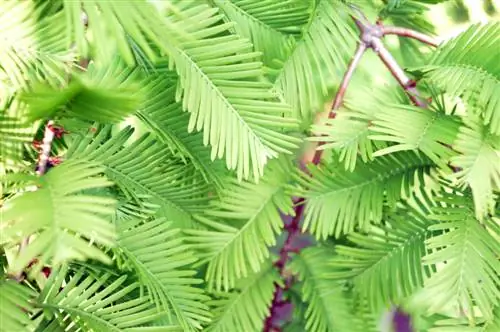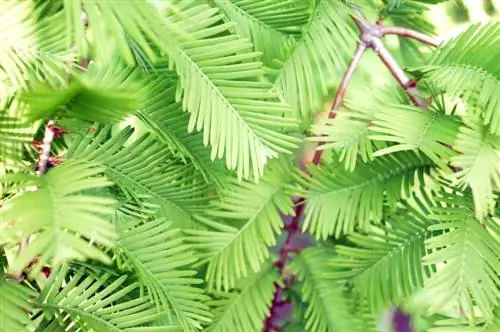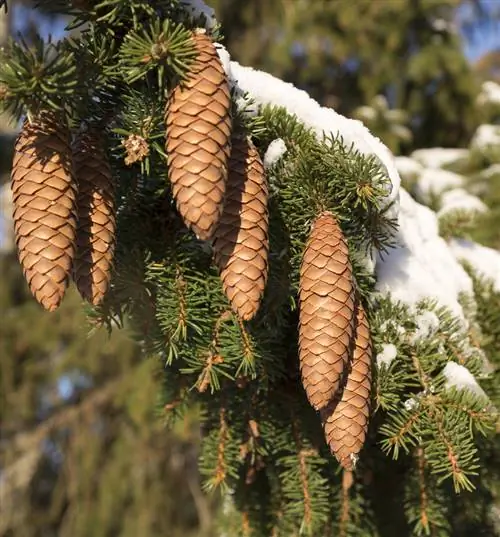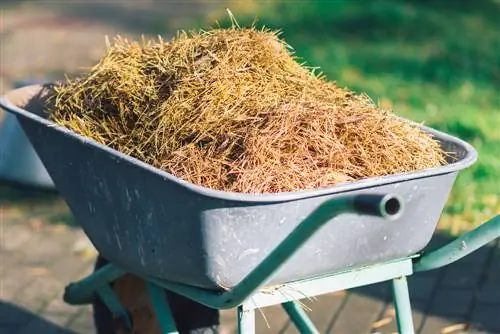- Author admin [email protected].
- Public 2024-01-02 03:03.
- Last modified 2025-01-23 11:21.
The impressive sequoia trees in the western United States reach astonishing heights of up to 100 meters. Although a plant of this size would certainly be a rarity, it is hard to imagine such a tree in your garden. After all, the tall growth of the American specimens also has a disadvantage: the beautiful leaves are hidden from the viewer's field of vision.

What do the leaves of a sequoia tree look like?
The leaves of the sequoia tree are conifers with a dark green color that varies depending on the species. Mountain redwoods have scale-shaped needles, while coast redwoods have solitary, needle-like leaves. In autumn the leaves turn reddish-brown and are shed, except on the evergreen coast redwood.
Appearance of leaves
Small needles decorate the branches
The sequoia tree is a conifer. The appearance of its leaves varies depending on the species. The mountain sequoia, for example, has scale-shaped needles that are arranged either in groups or clusters. The coast redwood, on the other hand, has solitary, needle-like leaves. These alternate feathers are strictly parted. On average, their length is 4 to 20 mm, their width is 1 to 2.5 mm. What all sequoia species have in common is the dark green color of their needles, some of which can also take on a bluish shimmer. The leaves are vaguely reminiscent of those of the yew tree. While the top has an intense green hue, the bottom is a little lighter.
Cones, flowers and seeds
On the needles there are small flowers as well as cones, which contain the seeds of the Sequoia. Interesting facts about the flowers:
- Length of male flowers: 5-7 mm
- Length of female flowers: 10 mm
- Color of male flowers: pale yellow
- Color of female flowers: green
- Blooming season of the mountain sequoia: March to April
- Flowering time of the coast redwood: February to March
What you need to know about the cones:
- ovoid
- hanging down
- 1, 5 to 3 cm long
- only form after 20 to 25 years
- Fruit formation of mountain sequoia: July to August
- Coast redwood fruiting: September to November
The sequoia tree is monoecious, meaning it has both male and female flowers. This enables self-fertilization.
Shedding of leaves in autumn
When it gets cold, the leaves of the sequoia tree turn red-brown. In the fall, the Seqouia completely sheds its needles. The following spring you can look forward to a deep green foliage again.
Special features of the coast redwood
The evergreen coast redwood alone wears its needles all year round. A heavy loss of leaves indicates pest infestation or a disease. Incorrect watering may be responsible for this.






